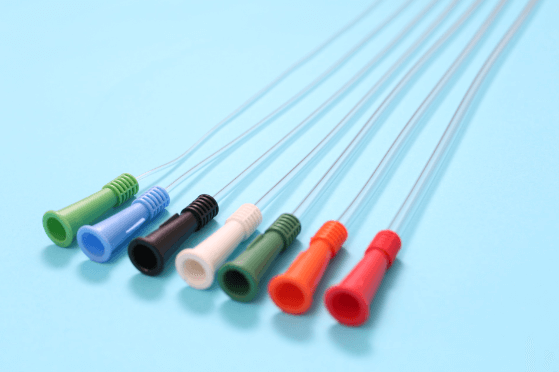TEl: +86-13148388090
Fax:+86-571-88616515
Customize Your Solution: Start Here with OEM & Private Label Coude Catheters
Author: admin / 2025-07-25In the global healthcare market, the demand for specialized urological devices is steadily increasing. Among these, the Coude catheter stands out as a critical solution for patients facing challenges with standard urinary catheterization, particularly those with anatomical complexities such as benign prostatic hyperplasia (BPH) or urethral strictures. For medical brands, distributors, and healthcare providers aiming to offer tailored solutions, OEM and private label coude catheters represent a strategic opportunity to deliver high-quality, customized products under their own brand.
Understanding the Coude Catheter and Its Clinical Significance

A Coude catheter is characterized by its uniquely angled or curved tip, designed specifically to facilitate catheterization in male patients who experience difficulty with traditional straight-tip catheters. The curved design allows the catheter to navigate around obstructions or anatomical curves within the urethra more effectively, reducing patient discomfort and the risk of trauma during insertion.
Common clinical indications for using a Coude catheter include:
-
Benign prostatic hyperplasia (BPH), which causes enlargement of the prostate gland and obstruction of urinary flow.
-
Urethral strictures or narrowing, which can impede the passage of standard catheters.
-
Patients who have experienced repeated failed catheterization attempts with straight catheters.
This specialized design not only improves clinical outcomes but also enhances patient comfort and reduces procedural complications, making the Coude catheter an essential device in urology and long-term catheter management.
The Value of OEM and Private Label Solutions for Coude Catheters
With increasing market competition and a growing need for product differentiation, many healthcare companies and distributors turn to OEM (Original Equipment Manufacturer) and private label manufacturing as viable approaches to expand their product portfolios efficiently. These models offer several advantages:
-
Cost Efficiency: OEM production eliminates the need for significant capital investment in manufacturing facilities and equipment.
-
Speed to Market: Leveraging an experienced manufacturer’s existing production capabilities accelerates product launch timelines.
-
Customization: Brands can tailor product specifications—including materials, sizes, coatings, and packaging—to meet the preferences of specific markets or clinical requirements.
-
Regulatory Compliance: Partnering with an ISO-certified manufacturer ensures adherence to stringent quality standards and facilitates certification processes such as FDA 510(k) or CE marking.
-
Brand Identity: Private labeling allows companies to market products under their own brand, enhancing customer loyalty and market positioning.
Customization Capabilities to Meet Diverse Clinical and Market Needs
A reputable OEM partner offers extensive customization options to suit varying clinical needs and market demands. When it comes to the Coude catheter, key customizable elements typically include:
-
Tip Design: Variations such as the classic Coude tip, Tiemann tip, or olive tip to accommodate different anatomical challenges.
-
Material Composition: Options range from medical-grade PVC and silicone to latex-free and DEHP-free materials, ensuring biocompatibility and patient safety.
-
Surface Coatings: Hydrophilic coatings or pre-lubricated options reduce friction during insertion, enhancing patient comfort and lowering the risk of urethral injury.
-
Size Range: Availability of a broad French size range (typically 6Fr to 24Fr) to meet pediatric, female, and male patient requirements.
-
Packaging and Labeling: Custom sterile packaging designs, multi-language instructions for use (IFUs), barcodes, and compliance with Unique Device Identification (UDI) regulations.
-
Certifications and Documentation: Support for regulatory submissions and quality audits with comprehensive technical files, biocompatibility reports, and sterilization validation.
These capabilities ensure that OEM and private label coude catheters can be precisely adapted to meet the clinical needs of diverse patient populations as well as the regulatory demands of various international markets.
Ensuring Quality and Regulatory Compliance
Quality assurance is paramount in the manufacturing of medical devices. Trusted OEM manufacturers operate under internationally recognized quality management systems such as ISO 13485, ensuring consistent product quality and safety. Additionally, they provide robust documentation to support regulatory approvals including FDA 510(k) in the United States and CE marking for the European Economic Area.
By partnering with an experienced OEM supplier, brands gain access to validated manufacturing processes, thorough quality control protocols, and regulatory expertise. This not only mitigates risk but also streamlines product registration and market access.
Strategic Advantages of Partnering with a Professional OEM for Coude Catheters
Collaborating with a seasoned OEM partner delivers numerous business benefits:
-
Reduced Operational Complexity: Outsourcing manufacturing allows your team to focus on sales, marketing, and distribution.
-
Access to Technical Expertise: OEM partners often offer design consultation, prototyping, and performance testing services.
-
Scalable Production: Ability to meet variable order volumes from pilot batches to full-scale production.
-
Global Market Reach: Manufacturers experienced in international trade support logistics, packaging compliance, and after-sales service.
-
Brand Differentiation: Tailored product features and packaging help your brand stand out in a competitive market.
Conclusion: Elevate Your Urology Product Line with OEM & Private Label Coude Catheters
In an evolving healthcare landscape, the ability to provide specialized, high-quality urological devices is a competitive necessity. Leveraging OEM and private label manufacturing for Coude catheters empowers your brand to meet specific clinical needs, ensure regulatory compliance, and accelerate time to market with a trusted manufacturing partner.
If you are interested in developing customized coude catheter products that align perfectly with your brand vision and market strategy, contact us today. We provide comprehensive OEM solutions, including product customization, regulatory support, and global logistics services—helping you deliver excellence in urological care.
If you're interested in Coude catheter products, be sure to check out this article. How do I choose the right coude catheters ?
- Bladder Health Guide: Understanding Overactive Bladder (OAB) and Practical Management Tips
- Bladder Health Essentials: Preventing and Managing Incontinence
- Bladder Health Awareness Month: Protecting Your Bladder & Managing Urinary Incontinence
- How to Choose a Reliable Nasopharyngeal Airway Supplier: A Deep-Dive Procurement Analysis


